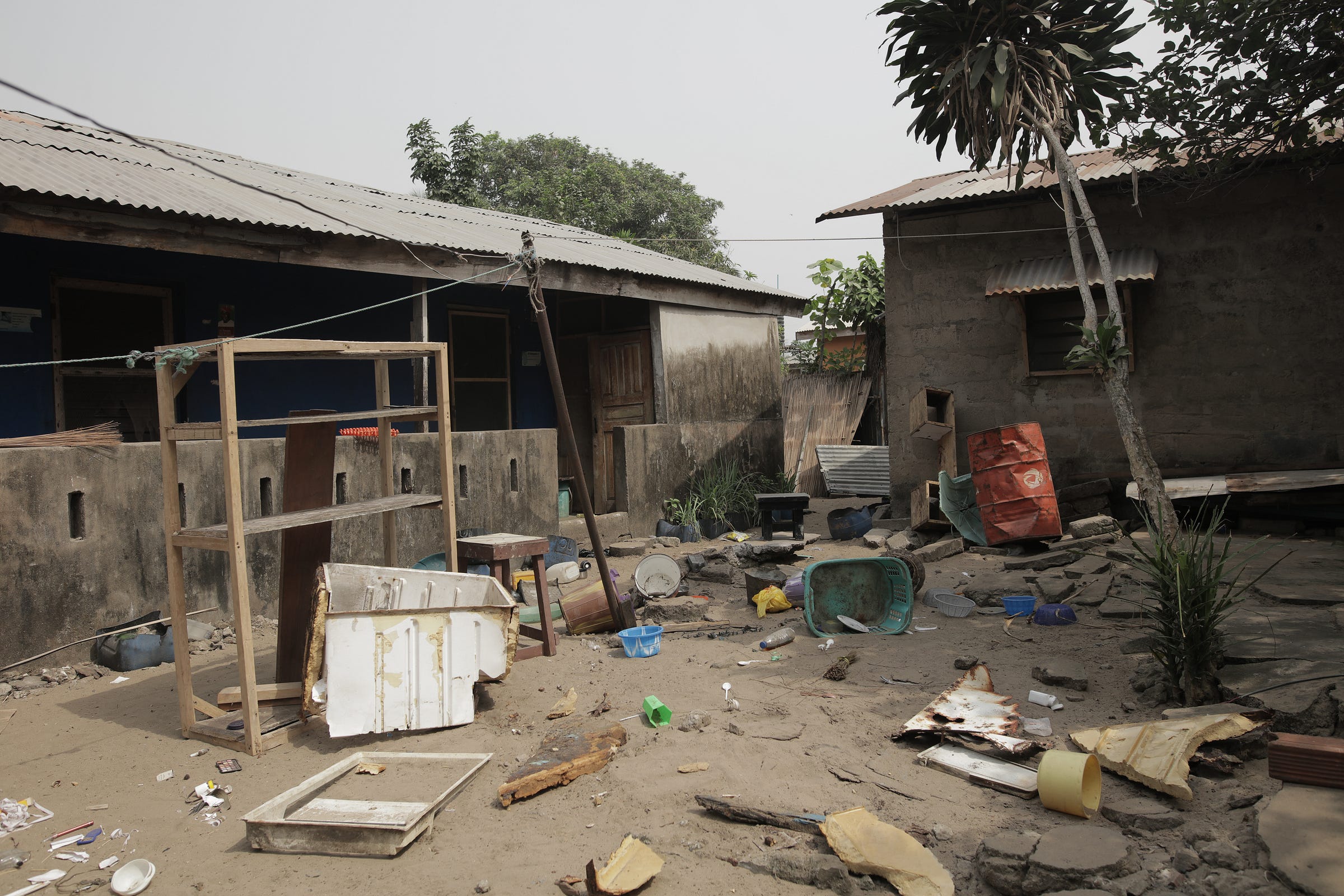The Aftermath
On photographs by Aghogho Otega, Teresa Meka, Taiwo Aina, and Olaoluwa Idris Adamu, previously featured on Tender Photo.




In an aftermath, the character of an event is settled, which is not to imply the scene is relaxed. Where there are people—as in photographs by Teresa Meka and Olaoluwa Adamu—the mood seems to fold in one collective expression of unease. In Meka’s photograph, for example, others might have the luxury of waiting, but the stance of the man in construction overalls is one of deliberation, of an intention to compose chaos into a pattern. And where, in photographs by Aghogho Otega and Taiwo Aina, the scene of an aftermath shows no persons, the point appears to be that chaos is without pattern.
Yet, this is in relation to how the photograph is composed, or from what vantage it was taken, or how the photographer got there in the first place. Otega and Aina are more specific in their attribution of blame. “A couple days after the forced eviction of the Tarkwa Bay residents commenced, I made up my mind to go in there and take pictures of what was going on,” Otega writes; “You can also see the cause of the problem which is the waste littered close to where I was standing,” notes Aina. Adamu puts it more plaintively: “The photo sums up the whole accident of that period…It raises questions that beg to be answered.”
Webster’s 1913 defines aftermath as “a second moving.” One way to illustrate the poetry of that line is to look at Adamu’s photograph of Mercy Street. An outcome, inferred from that definition, is the repeated occurrence of an event. In this regard, note the most expressive woman in the photograph, pictured no less differently than if she were watching the building collapse. ——
This is the #2 edition of CONCORDANCE, a series of micro-essays I’m writing in response to sequences of photographs previously featured on the newsletter. These notes, inspired by CORRESPONDENCES, will point to affinities in style, mood, or theme between the tendered photos. The series will run for an initial period of 2 months (June 3—July 29).
Tender Photo is a bi-weekly newsletter on African photography, published Wednesdays and Saturdays. See the archive for more features on early to mid-career photographers, or submit your work. If this newsletter was shared with you, consider subscribing, or forward to a friend. Please whitelist the newsletter to ensure you never miss it.




In photos 1,3 and 4, it is a bit clear what is no longer there. What no longer exists or has moved on. And I think these photographs exists as a monument to that loss. They urge us to remember our impermanence and before we move on, we should gift what is lost, something it no longer has - time.